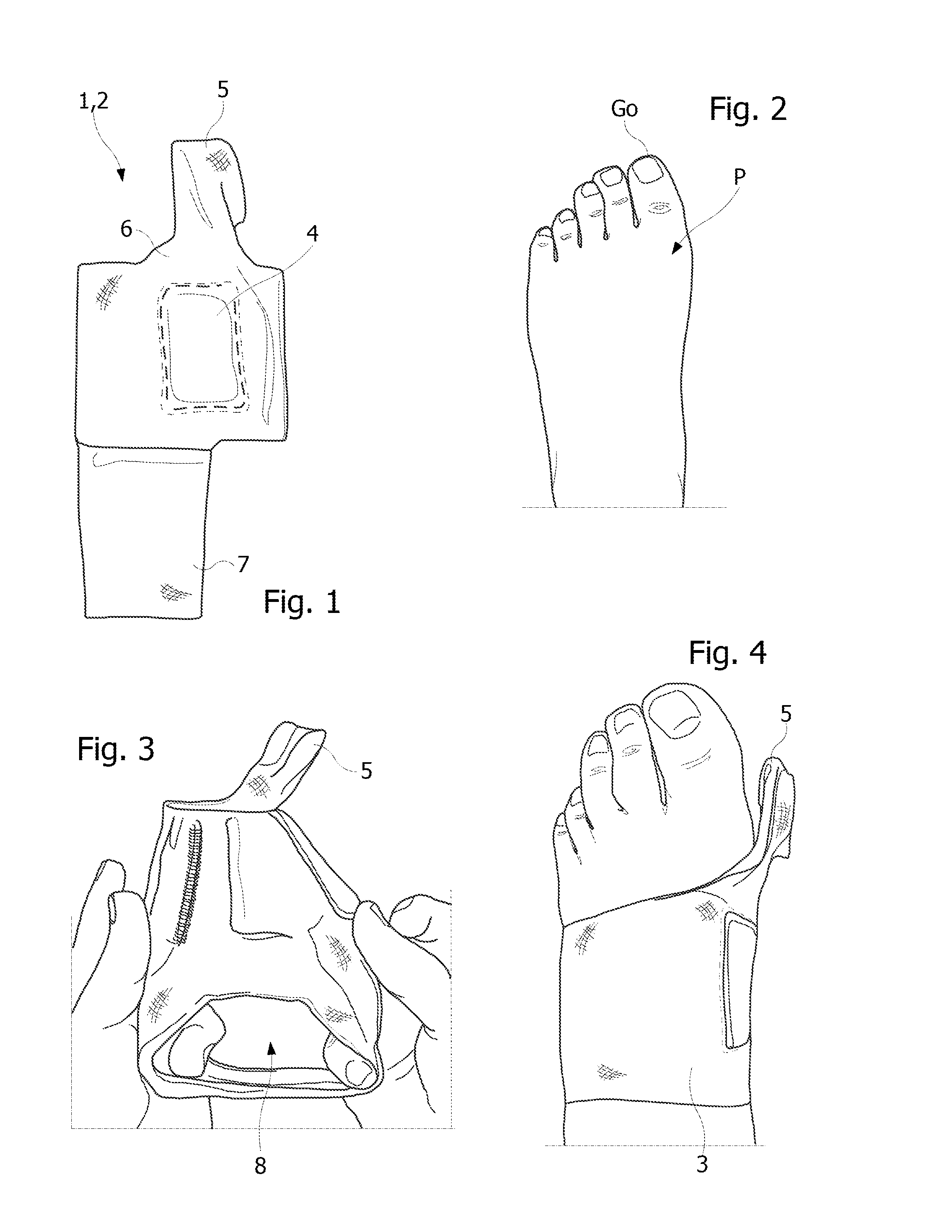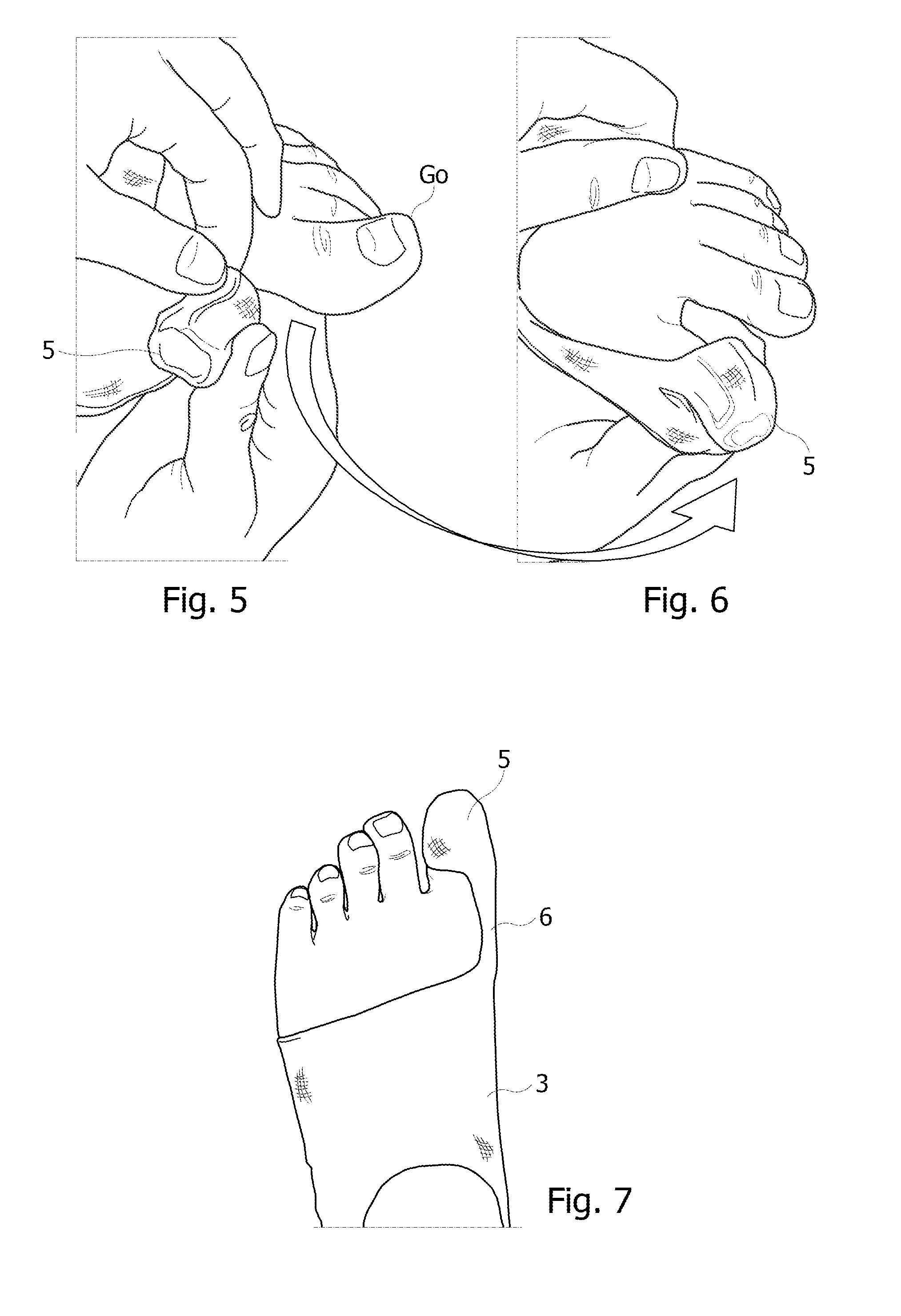Orthopedic device for the mechanical treatment of hallux valgus
an orthopedic device and mechanical treatment technology, applied in non-surgical orthopedic devices, medical science, plasters, etc., can solve the problems of not re-aligning and repairing the hallux valgus, inconvenient wear for wearers, and the insole forms a rigid splin
- Summary
- Abstract
- Description
- Claims
- Application Information
AI Technical Summary
Benefits of technology
Problems solved by technology
Method used
Image
Examples
Embodiment Construction
[0048]FIGS. 1 and 16B represent an orthopedic device 1 for the treatment of Hallux Valgus Ha, essentially consisting of an elastic sleeve 2 intended to be worn on the foot P to exert a localized restraining effect on the metatarsals M1, M2, M3, M4, M5 of the foot (FIG. 16A). This restraining effect particularly enables the adduction of the first metatarsal M1 to be restricted compared to the axis Δ of the human body. The device 1 is flexible and non-rigid.
[0049]According to one embodiment, the localized restraining effect enables a lateral force F1 directed outwards in relation to the axis Δ of the human body to be exerted on the first metatarsal M1 of the big toe, i.e. towards the interior of the foot, so as to obtain a re-alignment of the metatarsus varus and thus of Hallux Valgus.
[0050]The device 1 is in the form of a thin splint, the thickness of which is substantially equal to that of the material of the sleeve, for example less than 1 mm, producing a slight restraining effect,...
PUM
| Property | Measurement | Unit |
|---|---|---|
| width | aaaaa | aaaaa |
| width | aaaaa | aaaaa |
| width | aaaaa | aaaaa |
Abstract
Description
Claims
Application Information
 Login to View More
Login to View More - R&D
- Intellectual Property
- Life Sciences
- Materials
- Tech Scout
- Unparalleled Data Quality
- Higher Quality Content
- 60% Fewer Hallucinations
Browse by: Latest US Patents, China's latest patents, Technical Efficacy Thesaurus, Application Domain, Technology Topic, Popular Technical Reports.
© 2025 PatSnap. All rights reserved.Legal|Privacy policy|Modern Slavery Act Transparency Statement|Sitemap|About US| Contact US: help@patsnap.com



